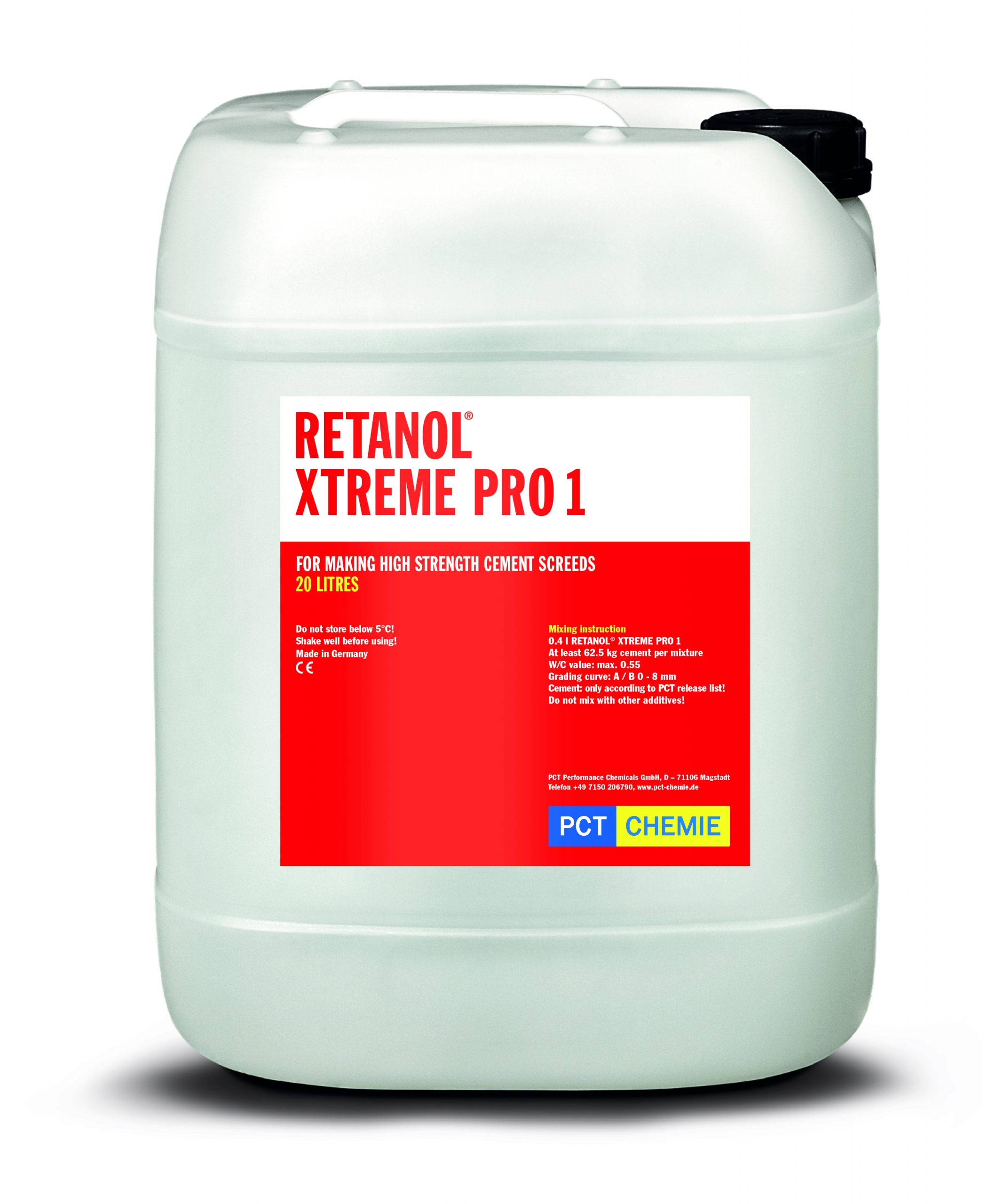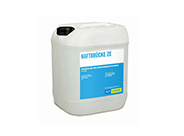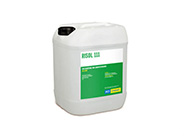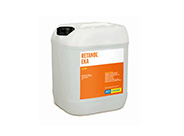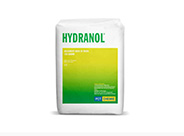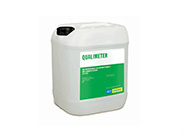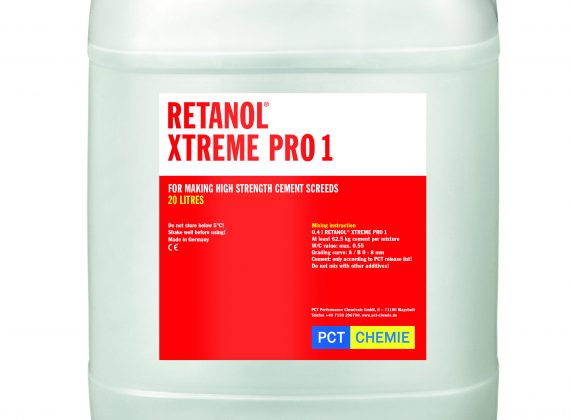Description
As explained in the Technical Data Sheet (see the link above), Retanol Xtreme Pro 1 is a high performance additive for installing fast track low shrinkage and low tension bonded, unbonded and floating cement floor screeds. Enhances pumping and workability enormously.
Key performance advantages:
• Guaranteed drying times: from 48 hrs for tiles and 72 hrs for all other floor coverings
• Foot traffic after 24hrs
• Approximately 80 –90 % of final strength within first 3–4 days. (Obtainable minimum strengths of CT-C40-F6 up to CT-C60-F8 depending on aggregates and amount of cement in accordance with DIN 1045-2)
• Underfloor heating can be run after 24 hrs (As per PCT Guidelines)
• Early compressive and flexural strength
• Ideal for underfloor heating with improved thermal conductivity
• Extended working life with short drying time
• Insensitive to moisture, therefore suitable for permanently wet areas
• For internal and external use
• Underfloor heating pipes require a minimum of 30 mm coverage over the pipe (As per BS 8204)
• Bonded screeds from 25 mm. In special cases, and subject to PCT site inspection and assessment, 15 mm depth (with ZE bonding agent) is possible with 0–4 mm Aggregates
• Unbonded and floating screeds from 35 mm
• PCT RETANOL® XTREME is a TUV certified screed product recognised under EU standards as a construction product with no negative impact on human health when handled or added into a floor screed installation
TUV certification
TUV certification involves rigorous testing of the applications for which the product is designed. It includes verification that the product satisfies the strictest European regulations for the industry in which the product was designed for and ensures the product specifications are stated correctly. This is a significant change in the safe use of screed products across the UK construction sector. The full report is available on request.
Instructions For Use
The general guidelines, data sheets and specifications for cement screeds are applicable to the mixing and laying of PCT RETANOL® XTREME screeds.
Application temperature: +5 °C to max. +28 °C (ambient and substrate temperature).
A tropical version is available upon request for higher temperature applications.
Apply PCT RETANOL® XTREME within 90 minutes of mixing. Higher temperatures will reduce and lower temperatures will increase the working life of the screed mix.
Mixing Instructions
Minimum 62.5 kg of cement, maximum of 75 kg of cement per 250 litres standard screed pump vessel – please refer to the PCT Cement Approval list for suitable types of cement.
Dosage: 400 ml of PCT RETANOL® XTREME in standard screed pump mixing vessels with 250 litres gross capacity. i.e. 2 litres per M³ (5 pump filings are assumed at 200 litres each, amounting to 1 m³).
Fill the screed pump to about one-half with sand and the entire amount of cement (min 62.5 kg) as usual. Add PCT RETANOL® XTREME to the first mixing water (usually 5 –10 litres) and then fill the pump completely. Gradually add the required amount of residual water until a pliable consistency is obtained.
Tiles can be laid after 48 hrs with 75 kg of cement class 42.5R, all other coverings after 72hrs.
Important Note: cement quantities below 62.5 kg and/or dosages below 400 ml will result in weaker screeds. A simple test for on site moisture checking is the “damp earth test”. By squeezing a handful of screed tightly with a gloved hand, when released, the sample should retain its shape and leave the gloved hand slightly moist without running water.
Note: A mixing time of 2 minutes ensures proper blending of the products. PCT RETANOL® XTREME must never be mixed with other screed or mortar additives.
It is important to prepare the screed mixture correctly by ensuring you select the approved cement type, cement quantity and aggregates in accordance with DIN 1045-2, grading curve of Minimum A/B, 0–8 mm, for making floor screed. 0–4 mm aggregates may affect drying time and strength.
General Points
Never reactivate screed mortar which is already setting by adding additional water. This also applies to mechanical and manual finishing. Do not apply additional PCT RETANOL® XTREME to a screed that is already setting.
Always shake PCT RETANOL® XTREME well before use. Shake the product at regular intervals (about every 30 minutes) during application.
Long “standstill” periods for the container can cause the ingredients to separate and this may have a negative effect on the performance of the product.
Protect the screed from draughts, direct sunlight and excessive heat during the entire application. It may be necessary to darken large window fronts and floor-level glass facade areas to prevent over drying.
The correct method to measure moisture content in all PCT RETANOL® screeds is by using a CM (Carbide Method) Moisture Test. Electronic measuring devices cannot determine the moisture content in Retanol screeds.
WINTER RULES
The application of cement screeds in winter at too low temperatures always presents a risk. Not without reason does the cement industry specify a minimum temperature of ≥+5 °C for the application of cement. Below this limit, cement reacts very slowly or not at all. The desired strengths and other screed properties might not be obtained.
For PCT RETANOL® XTREME we have summarized the following “12 Golden PCT Winter Rules” for you:
1. Too cold: refuse the application
Always follow the BS8204 along with all other relevant guidelines including this Technical Data Sheet
2. Heat the mixing location and building to at least +5 °C.
Heat the mixing location and building such that the cement and aggregates as well as the applied screed will not freeze and their temperature will not fall below +5 °.
3. Do not use heating lances.
The use of heating lances for heating the screed sand has negative effects on both the sand itself as well as the screed mortar.
4. Room climate: max. +15 °C temperature & min. 45 % air humidity.
The temperature difference between outside and inside the building must not vary more than +15 °C. Further a minimum of 45% RH is recommended inside the building. This prevents thermal shock effects, rapid surface drying and excessive deformation.
5. Do not use floor heating during application.
Use other heating methods for “frost protection”. It is not recommended to use floor heating – even at low temperatures. Large deformations frequently occur at joints and edges when using floor heating during application.
6. Avoid warm airflows on and near the screed.
Caution regarding heating systems! “Forced heating” in the building may result in too rapid drying. High temperatures and strong blowers cause detrimental air movement.
7. Heat the building beforehand.
Start heating the building at least 5–6 days before screed application. This time is necessary for obtaining the required temperature in cold buildings.
8. Do not use kiln-dried sand.
9. Do not use antifreeze agents.
10. Warm water is no help.
Example: At 0 °C temperature of the base materials cement and sand, the addition of +30 °C warm water will only increase the temperature of the screed mixture by +1.6 °C.
At this temperature neither the cement nor the additives react. Warm water is however suitable for cleaning conveyors and tools.
11. Never leave additives and cement outdoors in vehicles overnight.
Additives and cement must never be stored outdoors in vehicles overnight in the winter season.
12. Warm up PCT RETANOL® e.g. In warm water, at temperatures of about 15 to 20°C PCT RETANOL® has an ideal viscosity and is fully effective.
WHEN CAN SCREEDS BE WALKED ON AND SUBJECTED TO LOAD?
PCT RETANOL® XTREME screeds can be walked on 24 hours after application. They can be subjected to loads if exposed to standard site traffic after 2 days. This means that rolling loads such as wheelbarrows can be used. Note: PCT RETANOL® XTREME screeds are floor levelling screeds. Observe British Standards when point-loading.
Subjecting the floor to loads too early may result in damage to the screed surface and/or the screed structure and/or promote crack formation. Screed vibrations must be permanently avoided.
The expansion foam strips must not be cut off before the laying of floor coverings or the grouting process for laying tiles has been completed, and this must be done by the floor installer.
DRYING AND VENTILATION OF ROOMS WITH HEATED AND UNHEATED PCT RETANOL® XTREME SCREEDS
Danger: premature drying and air circulation can cause additional deformation in the screed. In the areas around joints this often results in concave curling or lipping which cannot be rectified, along with a possible height offset between the screed sections. This also increases the risk of crack formation. High indoor air humidity is not conducive to the drying process. This is why regular ventilation is necessary from the second day after completion of the screed installation. All windows and doors must be opened for at least 15 to 20 minutes two or three times a day as a minimum. This enables the necessary air exchange and supports the drying process. Where there is insufficient regular ventilation or if rooms are not ventilated, it takes considerably longer to obtain full drying.
The heating engineer must prepare a record on the initial heating and the subsequent commissioning. The signed record must be handed over to all relevant parties and contain the following information: All heating data with respective flow temperatures and maximum flow temperature attained. Operating conditions and outdoor temperature upon handover and date of commissioning.
UNDERFLOOR HEATING PROTOCOL. WATER TEMPERATURE NOT FLOOR TEMPERATURE
All UFH levelling screeds must be able to release the initial tension from the screed which is created upon installation before the final floor covering is installed. This is not a drying related requirement.
Boiler system must be on constant cycle when following the method below.
– 2/3&7 day dry
– HEATING PHASES.
– From the 2nd day after application: water temperature +25 °C.
– From the 3rd day after application: water temperature Max +55 °C.
– From the 4th day after application: water temperature Max +55 °C.
– From the 5th day after application: water temperature +25 °C
– 2nd day means a full 48hrs after completion of the screed installation.
– The floor temperature must be adjusted to the floor finishing manufacturer’s requirement.
– This heating information is only valid when used with this technical data sheet.
– A CM moisture test must be performed before installing the final floor covering.
– Shelf life of 9 months stored in ideal conditions.


